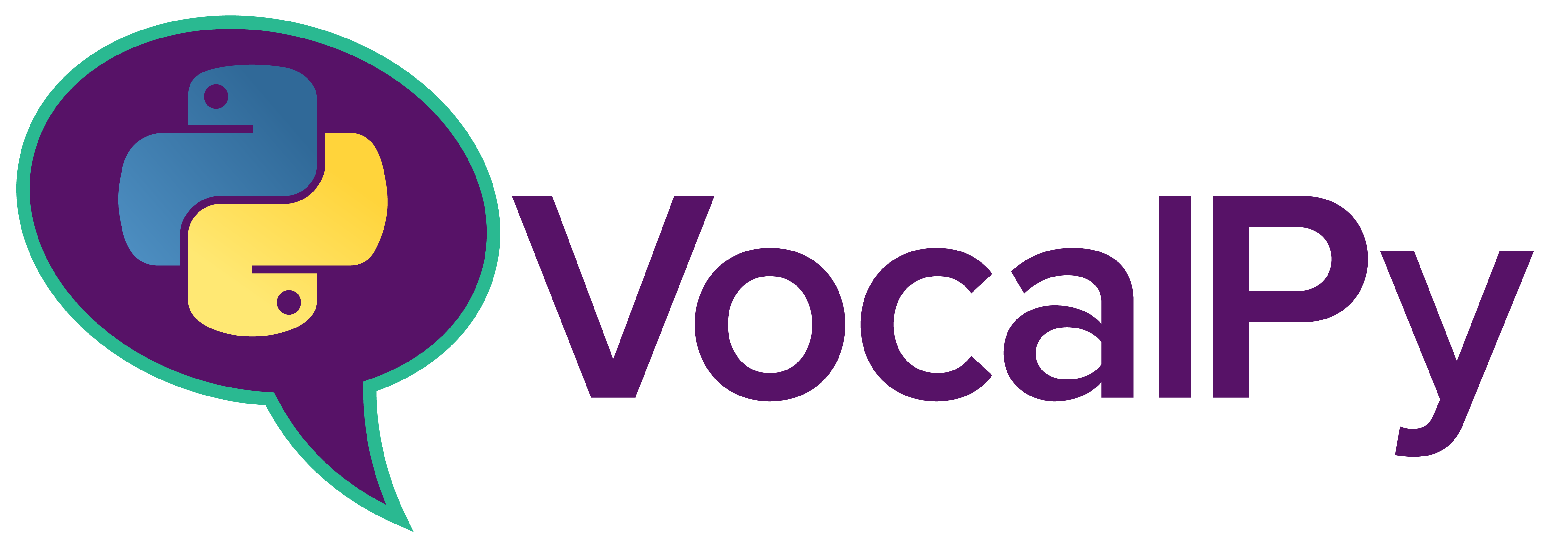A core package for acoustic communication research in Python
Project description

A core package for acoustic communication research in Python
There are many great software tools for researchers studying acoustic communication in animals[^1]. But our research groups work with a wide range of different data formats: for audio, for array data, for annotations. This means we write a lot of low-level code to deal with those formats, and then our code for analyses is tightly coupled to those formats. In turn, this makes it hard for other groups to read our code, and it takes a real investment to understand our analyses, workflows and pipelines. It also means that it requires significant work to translate from a pipeline or analysis worked out by a scientist-coder in a Jupyter notebook into a generalized, robust service provided by an application.
In particular, acoustic communication researchers working with the Python programming language face these problems. How can our scripts and libraries talk to each other? Luckily, Python is a great glue language! Let's use it to solve these problems.
The goals of VocalPy are to:
- make it easy to work with a wide array of data formats: audio, array (spectrograms, features), annotation
- provide classes that represent commonly-used data types: audio, spectograms, features, annotations
- provide classes that represent common processes and steps in pipelines: segmenting audio, computing spectrograms, extracting features
- make it easier for scientist-coders to flexibly and iteratively build datasets, without needing to deal directly with a database if they don't want to
- make it possible to re-use code you have already written for your own research group
- and finally:
- make code easier to share and read across research groups, by providing these classes, and idiomiatic ways of coding with them; think of VocalPy as an interoperability layer and a common language
- facilitate collaboration between scientist-coders writing imperative analysis scripts and research software engineers developing libraries and applications
A paper introducing VocalPy and its design has been accepted at Forum Acusticum 2023 as part of the session "Open-source software and cutting-edge applications in bio-acoustics", and will be published in the proceedings.
[^1]: For a curated collection, see https://github.com/rhine3/bioacoustics-software.
Features
Data types for acoustic communication data: audio, spectrogram, annotations, features
The vocalpy.Sound data type
- Works with a wide array of audio formats, thanks to soundfile.
- Also works with the cbin audio format saved by the LabView app EvTAF used by many neuroscience labs studying birdsong, thanks to evfuncs.
>> > import vocalpy as voc
>> > data_dir = ('tests/data-for-tests/source/audio_wav_annot_birdsongrec/Bird0/Wave/')
>> > wav_paths = voc.paths.from_dir(data_dir, 'wav')
>> > audios = [voc.Sound.read(wav_path) for wav_path in wav_paths]
>> > print(audios[0])
vocalpy.Sound(data=array([3.0517...66210938e-04]), samplerate=32000, channels=1),
path = tests / data -
for -tests / source / audio_wav_annot_birdsongrec / Bird0 / Wave / 0.wav)
The vocalpy.Spectrogram data type
- Save expensive-to-compute spectrograms to array files, so you don't regenerate them over and over again
>>> import vocalpy as voc
>>> data_dir = ('tests/data-for-tests/generated/spect_npz/')
>>> spect_paths = voc.paths.from_dir(data_dir, 'wav.npz')
>>> spects = [voc.Spectrogram.read(spect_path) for spect_path in spect_paths]
>>> print(spects[0])
vocalpy.Spectrogram(data=array([[3.463...7970774e-14]]), frequencies=array([ 0....7.5, 16000. ]), times=array([0.008,...7.648, 7.65 ]),
path=PosixPath('tests/data-for-tests/generated/spect_npz/0.wav.npz'), audio_path=None)
The vocalpy.Annotation data type
- Load many different annotation formats using the pyOpenSci package crowsetta
>>> import vocalpy as voc
>>> data_dir = ('tests/data-for-tests/source/audio_cbin_annot_notmat/gy6or6/032312/')
>>> notmat_paths = voc.paths.from_dir(data_dir, '.not.mat')
>>> annots = [voc.Annotation.read(notmat_path, format='notmat') for notmat_path in notmat_paths]
>>> print(annots[1])
Annotation(data=Annotation(annot_path=PosixPath('tests/data-for-tests/source/audio_cbin_annot_notmat/gy6or6/032312/gy6or6_baseline_230312_0809.141.cbin.not.mat'),
notated_path=PosixPath('tests/data-for-tests/source/audio_cbin_annot_notmat/gy6or6/032312/gy6or6_baseline_230312_0809.141.cbin'),
seq=<Sequence with 57 segments>), path=PosixPath('tests/data-for-tests/source/audio_cbin_annot_notmat/gy6or6/032312/gy6or6_baseline_230312_0809.141.cbin.not.mat'))
Classes for common steps in your pipelines and workflows
A Segmenter for segmentation into sequences of units
>> > import evfuncs
>> > import vocalpy as voc
>> > data_dir = ('tests/data-for-tests/source/audio_cbin_annot_notmat/gy6or6/032312/')
>> > cbin_paths = voc.paths.from_dir(data_dir, 'cbin')
>> > audios = [voc.Sound.read(cbin_path) for cbin_path in cbin_paths]
>> > segment_params = {'threshold': 1500, 'min_syl_dur': 0.01, 'min_silent_dur': 0.006}
>> > segmenter = voc.Segmenter(callback=evfuncs.segment_song, segment_params=segment_params)
>> > seqs = segmenter.segment(audios, parallelize=True)
[ ########################################] | 100% Completed | 122.91 ms
>> > print(seqs[1])
Sequence(units=[Unit(onset=2.19075, offset=2.20428125, label='-', audio=None, spectrogram=None),
Unit(onset=2.35478125, offset=2.38815625, label='-', audio=None, spectrogram=None),
Unit(onset=2.8410625, offset=2.86715625, label='-', audio=None, spectrogram=None),
Unit(onset=3.48234375, offset=3.49371875, label='-', audio=None, spectrogram=None),
Unit(onset=3.57021875, offset=3.60296875, label='-', audio=None, spectrogram=None),
Unit(onset=3.64403125, offset=3.67721875, label='-', audio=None, spectrogram=None),
Unit(onset=3.72228125, offset=3.74478125, label='-', audio=None, spectrogram=None),
Unit(onset=3.8036875, offset=3.8158125, label='-', audio=None, spectrogram=None),
Unit(onset=3.82328125, offset=3.83646875, label='-', audio=None, spectrogram=None),
Unit(onset=4.13759375, offset=4.16346875, label='-', audio=None, spectrogram=None),
Unit(onset=4.80278125, offset=4.814, label='-', audio=None, spectrogram=None),
Unit(onset=4.908125, offset=4.922875, label='-', audio=None, spectrogram=None),
Unit(onset=4.9643125, offset=4.992625, label='-', audio=None, spectrogram=None),
Unit(onset=5.039625, offset=5.0506875, label='-', audio=None, spectrogram=None),
Unit(onset=5.10165625, offset=5.1385, label='-', audio=None, spectrogram=None),
Unit(onset=5.146875, offset=5.16203125, label='-', audio=None, spectrogram=None),
Unit(onset=5.46390625, offset=5.49409375, label='-', audio=None, spectrogram=None),
Unit(onset=6.14503125, offset=6.1565625, label='-', audio=None, spectrogram=None),
Unit(onset=6.31003125, offset=6.346125, label='-', audio=None, spectrogram=None),
Unit(onset=6.38996875, offset=6.4018125, label='-', audio=None, spectrogram=None),
Unit(onset=6.46053125, offset=6.4796875, label='-', audio=None, spectrogram=None),
Unit(onset=6.83525, offset=6.8643125, label='-', audio=None, spectrogram=None)], method='segment_song',
segment_params={'threshold': 1500, 'min_syl_dur': 0.01, 'min_silent_dur': 0.006},
audio=vocalpy.Sound(data=None, samplerate=None, channels=None), path=tests / data -
for -tests / source / audio_cbin_annot_notmat / gy6or6 / 032312 / gy6or6_baseline_230312_0809.141.cbin), spectrogram=None)
A SpectrogramMaker for computing spectrograms
>> > import vocalpy as voc
>> > wav_paths = voc.paths.from_dir('wav')
>> > audios = [voc.Sound(wav_path) for wav_path in wav_paths]
>> > spect_params = {'fft_size': 512, 'step_size': 64}
>> > spect_maker = voc.SpectrogramMaker(spect_params=spect_params)
>> > spects = spect_maker.make(audios, parallelize=True)
Datasets you flexibly build from pipelines and convert to databases
- The
vocalpy.datasetmodule contains classes that represent common types of datasets - You make these classes with outputs of your pipelines, e.g. a
listofvocalpy.Sequences orvocalpy.Spectrograms - Because of the design of
vocalpy, these datasets capture key metadata from your pipeline:- parameters and data provenance details; e.g., what parameters did you use to segment? What audio file did this sequence come from?
- Then you can save the dataset along with metadata to databases, or later load from databases
vocalpycomes with built-in support for persisting to SQLite, a lightweight, efficient single-file database format. It is the only database file format recommended by the US Library of Congress for archival data, and it's built into Python -- no need to install separate database software like MySQL
A SequenceDataset for common analyses of sequences of units
>> > import evfuncs
>> > import vocalpy as voc
>> > data_dir = 'tests/data-for-tests/source/audio_cbin_annot_notmat/gy6or6/032312/'
>> > cbin_paths = voc.paths.from_dir(data_dir, 'cbin')
>> > audios = [voc.Sound.read(cbin_path) for cbin_path in cbin_paths]
>> > segment_params = {
'threshold': 1500,
'min_syl_dur': 0.01,
'min_silent_dur': 0.006,
}
>> > segmenter = voc.Segmenter(
callback=evfuncs.segment_song,
segment_params=segment_params
)
>> > seqs = segmenter.segment(audios)
>> > seq_dataset = voc.dataset.SequenceDataset(sequences=seqs)
>> > seq_dataset.to_sqlite(db_name='gy6or6-032312.db', replace=True)
>> > print(seq_dataset)
SequenceDataset(sequences=[Sequence(units=[Unit(onset=2.18934375, offset=2.21, label='-', audio=None, spectrogram=None),
Unit(onset=2.346125, offset=2.373125, label='-', audio=None,
spectrogram=None), Unit(onset=2.50471875, offset=2.51546875,
label='-', audio=None, spectrogram=None),
Unit(onset=2.81909375, offset=2.84740625, label='-', audio=None,
spectrogram=None),
...
>> > # test that we can load the dataset
>> > seq_dataset_loaded = voc.dataset.SequenceDataset.from_sqlite(
db_name='gy6or6-032312.db')
>> > seq_dataset_loaded == seq_dataset
True
Installation
With pip
$ conda create -n vocalpy python=3.10
$ conda activate vocalpy
$ pip install vocalpy
With conda
$ conda create -n vocalpy python=3.10
$ conda activate vocalpy
$ conda install vocalpy -c conda-forge
For more detail see Getting Started - Installation
Support
To report a bug or request a feature (such as a new annotation format),
please use the issue tracker on GitHub:
https://github.com/vocalpy/vocalpy/issues
To ask a question about vocalpy, discuss its development,
or share how you are using it,
please start a new topic on the VocalPy forum
with the vocalpy tag:
https://forum.vocalpy.org/
Contribute
Code of conduct
Please note that this project is released with a Contributor Code of Conduct. By participating in this project you agree to abide by its terms.
Contributing Guidelines
Below we provide some quick links,
but you can learn more about how you can help and give feedback
by reading our Contributing Guide.
To ask a question about vocalpy, discuss its development,
or share how you are using it,
please start a new "Q&A" topic on the VocalPy forum
with the vocalpy tag:
https://forum.vocalpy.org/
To report a bug, or to request a feature,
please use the issue tracker on GitHub:
https://github.com/vocalpy/vocalpy/issues
CHANGELOG
You can see project history and work in progress in the CHANGELOG
License
The project is licensed under the BSD license.
Citation
If you use vocalpy, please cite the DOI:
Contributors ✨
Thanks goes to these wonderful people (emoji key):
 Ralph Emilio Peterson 🤔 📓 📖 🐛 💻 |
This project follows the all-contributors specification. Contributions of any kind welcome!
Project details
Release history Release notifications | RSS feed
Download files
Download the file for your platform. If you're not sure which to choose, learn more about installing packages.
Source Distribution
Built Distribution
File details
Details for the file vocalpy-0.9.4.tar.gz.
File metadata
- Download URL: vocalpy-0.9.4.tar.gz
- Upload date:
- Size: 4.3 MB
- Tags: Source
- Uploaded using Trusted Publishing? No
- Uploaded via: python-requests/2.32.3
File hashes
| Algorithm | Hash digest | |
|---|---|---|
| SHA256 | 56e934d60f6cfa0a1620307b1f0b46309422eb510bfcbdad8782e0225c76fee2 |
|
| MD5 | d3fee153f300b6ee8c9857690f074fc3 |
|
| BLAKE2b-256 | e48d4d7b4de89fc0a77ab1733ce7303624c7138bc9c3980b4e5b73cebfe3a10e |
File details
Details for the file vocalpy-0.9.4-py3-none-any.whl.
File metadata
- Download URL: vocalpy-0.9.4-py3-none-any.whl
- Upload date:
- Size: 729.9 kB
- Tags: Python 3
- Uploaded using Trusted Publishing? No
- Uploaded via: python-requests/2.32.3
File hashes
| Algorithm | Hash digest | |
|---|---|---|
| SHA256 | 487d4a7e2e4fb85fa1af54a5e9b4db320201f99654e5cfa546f25f26eca458c6 |
|
| MD5 | b1bdbf51829a64aae40fe3d6062c785e |
|
| BLAKE2b-256 | 4b8ecd1145c3f84ae2598bd4a38d246ef0f9ff357483c2852341cd6798882050 |




















